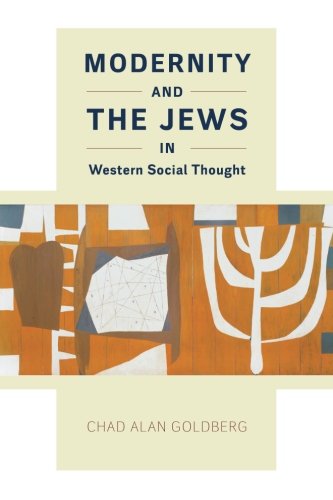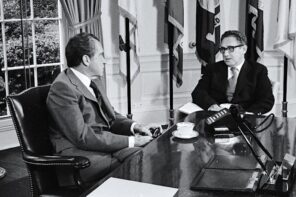What inspired you to write Modernity and the Jews in Western Social Thought?
I was invited to participate in an international conference on “Antisemitism and the Emergence of Sociological Theory” at the University of Manchester in 2008. I wrote a paper specifically for the conference, which was published first as a journal article and later as a chapter in Antisemitism and the Constitution of Sociology, an edited volume based on the conference. The conference was immensely interesting, and I continued to think afterward about the broader questions it raised in my mind. I’d taught sociological theory for years, I knew that the canonical founders of my discipline had written quite a bit about Jews and Judaism, and I started to ask how and why Jews became such an important touchstone for defining modernity and national identity in Europe and the United States.
Another source of inspiration was the desire to make this past usable. The sociologist C. Wright Mills once wrote that when we try to understand present-day society, “we come upon images which have been drawn from its past and which often confuse our attempt to confront its present reality.” It seemed to me that longstanding motifs continued to reappear in contemporary discussions about Jews and Israel, often without much historical awareness on the part of the people who articulated them, and that troubled me.
For example, the last chapter of my book describes how the old opposition between Jewish particularism and Christian universalism is pressed into service by contemporary social thinkers for new political projects. I started to think about how a historical sociology of social thought could make us more conscious of problematic but recurring patterns of thought and perhaps help to emancipate us from their grip.

Modernity and the Jews in Western Social Thought
Chad Alan Goldberg
U. of Chicago Press
May 2017
What’s the most important take-home message for readers?
Why study the history of social thought? There are different answers to this question, but for me, it has an emancipatory purpose. By reflecting critically on the categories, concepts, and principles that we have inherited from the past, we become more aware of the otherwise hidden influences on contemporary thought and practice, and in that way we gain some mastery over them. To paraphrase Santayana’s well known aphorism, we must remember the past to avoid repeating it.
Is there anything you had to leave out?
Brevity and conciseness are underappreciated virtues in academia. Some related material has been published in the form of journal articles, including a more extensive analysis of Karl Marx, and a discussion of how later social thinkers took up and modified Robert Park’s concept of the “marginal man.” However, I don’t think anything essential was left out of the book.
I do hope that the book opens up new avenues of inquiry and reflection. For instance, the fourth chapter reinterprets the assimilation of Jewish immigrants in relation to pragmatist concerns about forming a democratic public under modern social conditions. I couldn’t fully explore the implications of this suggestion in the book, but I hope that social scientists who are studying contemporary immigration will take up the idea and engage with it. Since their research builds on or challenges the legacy of Robert Park and the Chicago School of sociology, often explicitly, I hope my reinterpretation of that legacy will interest them.
What are some of the biggest misconceptions about your topic?
One misconception is that modernity necessarily means the declining significance of religion. Many secular intellectuals today have a hard time taking religion seriously; they tend to see it merely as a proxy for material interests or conditions. I think that view is mistaken, in part because it discounts what sociologist John Torpey calls latent religiosity. My book argues that instead of abandoning notions about Jews that were derived from Christian theology, Western social thinkers sometimes rearticulated them in secularized form.
Another misconception is that European colonialism, imperialism, or Orientalism is the primary matrix of the discourse of modernity. According to this view, the modern/traditional dichotomy has its roots in European encounters with the non-European world. These encounters were undoubtedly one matrix, but not the only one. My book argues that the historical relationship between Jews and gentiles is another background condition for the production of this dichotomy. Furthermore, this background condition was chronologically primary and not reducible to European colonialism, imperialism, or Orientalism.
Did you have a specific audience in mind when writing?
The book is not intended exclusively for specialists. I was aiming for an educated but general audience with broad interests in history, religion, Jewish Studies, and/or social science. I tried to minimize jargon and explain historical contexts rather than assuming familiarity with them. I also placed scholarly references in endnotes to avoid cluttering the text and distracting readers.
Are you hoping to just inform readers? Entertain them? Piss them off?
I hope to educate readers and encourage them to think critically about the tools of thought they have inherited and apply to the social world. When the website Public Seminar published an excerpt from my book in June 2017, sociologist Jeffrey Goldfarb commented that it proceeds “provocatively” and “unsettles clichéd thought of the left, right and center.” For me, this was high praise. To achieve its aims, the book has to be provocative and unsettling. Unless readers come to see things in a new or different way after they have finished the book, it’s not fully successful.
What alternative title would you give the book?
I initially thought of giving it the title In the Sight of the Nations, which is a recurring phrase in the Hebrew Bible, but I decided against it. It’s a nice literary flourish, but not many people would get the reference, and it would be too hard to tell what the book is about. The actual title sounds a little grandiose, but I think it conveys more clearly what the book is about.
How do you feel about the cover?
I love the cover! It features a picture of Robert Motherwell’s 1952 mural “The Walls of the Temple,” a beautiful work of modern art that incorporates abstracted but recognizably Jewish images. Motherwell’s mural was commissioned for an architecturally modernist synagogue built in Millburn, New Jersey, after the Second World War. I visited the synagogue before the publication of my book to see the mural, and I thought its combination of modernism and Jewishness made it ideal for the cover. I wanted to avoid hackneyed images or pictures, and I needed an image that was general enough to cover all of the different historical cases discussed in the book; I felt that Motherwell’s mural was also ideal for those reasons. I’m grateful to the Dedalus Foundation for granting permission to use the image and to the design department at the University of Chicago Press for creating a terrific cover with it.
Is there a book out there you wish you had written? Which one? Why?
There are many excellent books by historians, philosophers, and social scientists on the representation of Jews in social thought, the backgrounds and contexts of Jewish social thinkers, and the historical sociology of Jews and their relations to gentiles. My own book builds on these studies even as it tries to move beyond some of their limitations. Yirmiyahu Yovel’s Dark Riddle, Pierre Birnbaum’s Geography of Hope, and David Nirenberg’s Anti-Judaism are just a few notable examples of the kind of deep erudition and insightful interpretation that I sought to emulate.
What’s your next book?
In the course of working on this book, I became interested in the cultural pluralists of the early twentieth century. As immigration to the United States rose and its sources changed in those years, growing numbers of Americans began to call for the exclusion or coercive “Americanization” of new immigrants. In contrast, a small minority of dissenting intellectuals—Randolph Bourne, John Dewey, Alain Locke, Horace Kallen, and a few others—promoted the doctrine of cultural pluralism, a view with roots in the American school of philosophy known as pragmatism. Although their views weren’t identical, the pluralists agreed that American identity should rest on an ideal of harmonious diversity rather than racial or cultural homogeneity.
For my next book, I’m considering writing a new study of cultural pluralism and American democracy. Although none of the early twentieth-century cultural pluralists were sociologists, they addressed questions that were unmistakably sociological in nature: What holds modern societies together? How does mass immigration affect social integration? Does democracy require a common democratic or civic culture? If so, how might this requirement be reconciled with a commitment to cultural pluralism? The project would also be historical in nature, and it would allow me to return to a field of study in which I’m very interested: American political development. Lastly, with the current upsurge of nativism in Europe and the United States, I believe a historical study of cultural pluralism and American democracy would usefully speak to present-day concerns and controversies.





